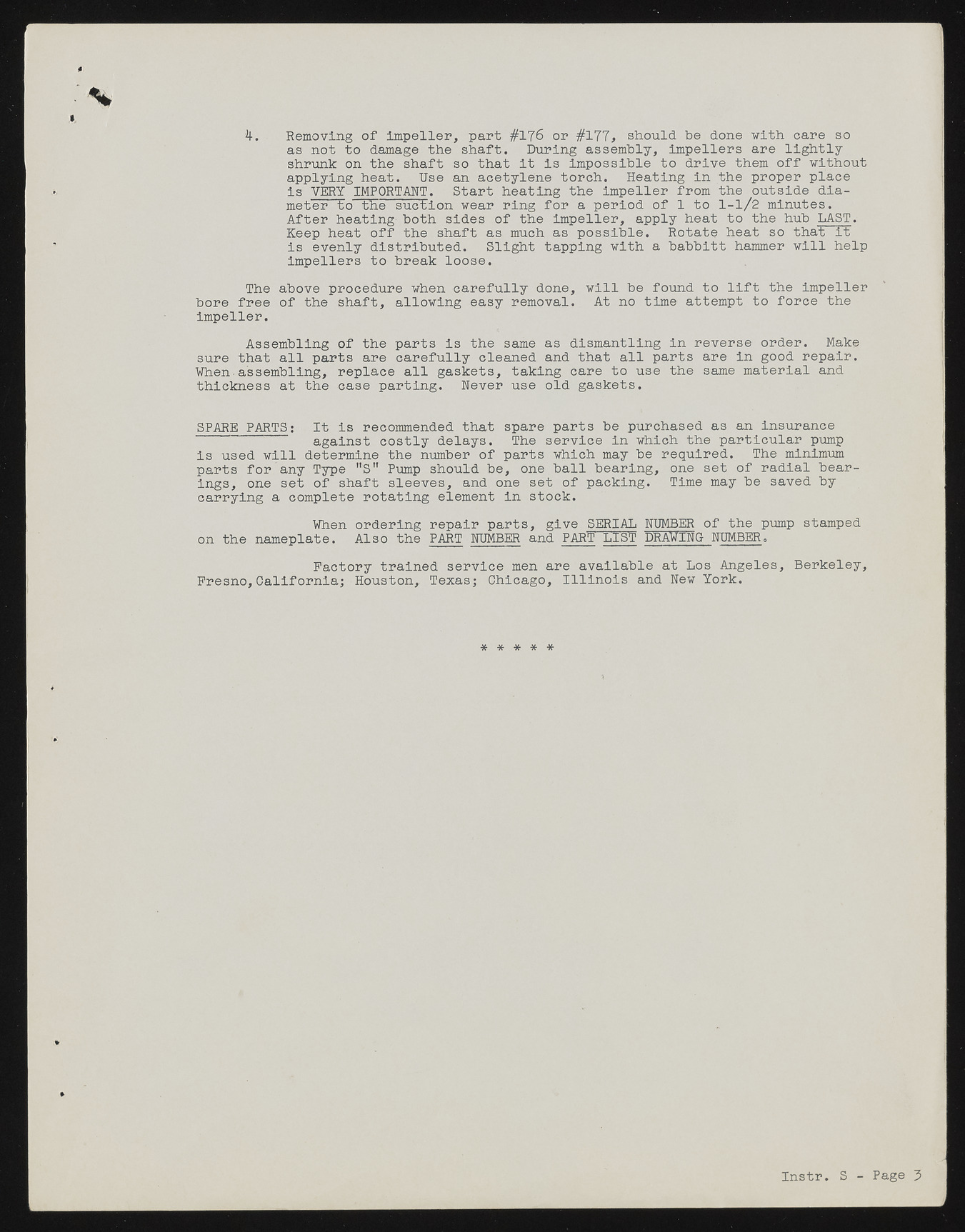Copyright & Fair-use Agreement
UNLV Special Collections provides copies of materials to facilitate private study, scholarship, or research. Material not in the public domain may be used according to fair use of copyrighted materials as defined by copyright law. Please cite us.
Please note that UNLV may not own the copyright to these materials and cannot provide permission to publish or distribute materials when UNLV is not the copyright holder. The user is solely responsible for determining the copyright status of materials and obtaining permission to use material from the copyright holder and for determining whether any permissions relating to any other rights are necessary for the intended use, and for obtaining all required permissions beyond that allowed by fair use.
Read more about our reproduction and use policy.
I agree.Information
Digital ID
Permalink
Details
More Info
Rights
Digital Provenance
Publisher
Transcription
SB Removing of impeller, part #176 or #177, should be done with care so as not to damage the shaft. During assembly, impellers are lightly shrunk on the shaft so that it is impossible to drive them off without applying heat. Use an acetylene torch. Heating in the proper place is VERY IMPORTANT. Start heating the impeller from the outside dia-meter to the suction wear ring for a period of 1 to 1-1/2 minutes. After heating- both sides of the impeller, apply heat to the hub LAST. Keep heat off the shaft as much as possible. Rotate heat so that it is evenly distributed. Slight tapping with a babbitt hammer will help impellers to break loose. The above procedure when carefully done, will be found to lift the impeller bore free of the shaft, allowing easy removal. At no time attempt to force the impeller. Assembling of the parts is the same as dismantling in reverse order. Make sure that all parts are carefully cleaned and that all parts are in good repair. When-assembling, replace all gaskets, taking care to use the same material and thickness at the case parting. Never use old gaskets. SPARE PARTS: It Is recommended that spare parts be purchased as an insurance against costly delays. The service in which the particular pump is used will determine the number of parts which may be required. The minimum parts for any Type "S" Pump should be, one ball bearing, one set of radial bearings, one set of shaft sleeves, and one set of packing. Time may be saved by carrying a complete rotating element In stock. When ordering repair parts, give SERIAL NUMBER of the pump stamped on the nameplate. Also the PART NUMBER and PART LIST DRAWING NUMBER. Factory trained service men are available at Los Angeles, Berkeley, Fresno, California; Houston, Texas; Chicago, Illinois and New York. * * * * * In str. S - Page 3

